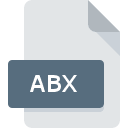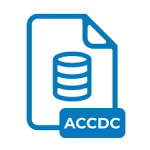.PDB File Extension

Program Database
| Developer | Microsoft |
| Popularity | |
| Category | Database Files |
| Format | .PDB |
| Cross Platform | Update Soon |
What is an PDB file?
.PDB files, also known as Program Database files, are a type of computer file used primarily for debugging purposes.
These files contain essential information about a program or application’s structure, including code and data definitions, function names, and variable names. Developers use .PDB files to assist in debugging, profiling, and analyzing software applications.
More Information.
.PDB files were initially created to facilitate debugging and troubleshooting during software development. They contain vital information that enables developers to map compiled code back to its source code, making it easier to identify and fix errors and bugs in their software.
In the early days of software development, debugging was a challenging and time-consuming task. Developers had to rely on print statements or rudimentary debugging tools to identify and rectify issues in their code. .PDB files revolutionized this process by providing a structured and comprehensive way to store debugging information.
Origin Of This File.
The origin of the .PDB file extension can be traced back to Microsoft. Microsoft introduced the Program Database format as part of the Microsoft Windows operating system development tools.
The primary purpose of .PDB files were to store debugging information for Microsoft’s development tools, allowing developers to gain insights into the inner workings of their software during the debugging process.
File Structure Technical Specification.
Understanding the structure and technical specifications of .PDB files are essential for developers and software engineers. These files follow a specific format that includes various data sections and tables. Here’s an overview of the key components of a .PDB file:
- Header: The header of a .PDB file contains essential information such as the version of the file format, the timestamp of when the file was created, and the architecture for which it was compiled.
- Stream Directory: This section of the file contains information about the different data streams within the .PDB file. Each stream can store various types of data, including symbol information, type information, and source line information.
- Symbol Records: Symbol records store data related to functions, variables, and other symbols within the compiled code. These records include information such as symbol names, memory addresses, and data types.
- Type Records: Type records define the data structures used in the program, including structs, classes, and enumerations. They help in mapping compiled code to source code.
- Source Line Information: This section contains information that maps machine code addresses to corresponding source code lines. It assists in debugging by allowing developers to identify the source of errors in their code.
- Debugging Information: Debugging information includes data that helps developers trace the execution of a program, such as call stacks and function parameters.
- Checksums and Signatures: .PDB files also include checksums and signatures to ensure data integrity and security.
How to Convert the File?
Converting .PDB files may be necessary when you need to work with them in different environments or software tools. Here are some common methods to convert .PDB files:
1. Using Development Tools: Many development environments and programming languages provide tools for converting .PDB files to other formats. For example, Visual Studio, a popular integrated development environment (IDE) by Microsoft, allows you to convert .PDB files to other debugging formats or symbol files.
2. Third-Party Conversion Software: Some third-party software tools are designed specifically for converting .PDB files to different formats. These tools may offer more flexibility and options for conversion.
3. Manual Conversion: If you need to convert .PDB files to a human-readable format, you can manually extract information from the .PDB file using a text editor or specialized parsers. This method may require a good understanding of the .PDB file structure.
Advantages And Disadvantages.
.PDB files offer several advantages to developers and software engineers:
1. Debugging Aid: .PDB files are indispensable for debugging and troubleshooting software applications, as they provide detailed information about code and data structures.
2. Code Optimization: Developers can use .PDB files to analyze the performance of their code and make optimizations, resulting in more efficient software.
3. Reverse Engineering: .PDB files can be used for reverse engineering purposes, allowing developers to understand and modify third-party software.
.PDB files also have some disadvantages:
1. Large File Sizes: .PDB files can be quite large, especially for complex software applications. This can lead to increased storage requirements.
2. Security Concerns: Distributing .PDB files along with software can pose security risks, as they contain detailed information about the program’s structure, which could be exploited by malicious actors.
How to Open PDB?
Open In Windows
Using Visual Studio:
- As mentioned earlier, Visual Studio is the go-to tool for opening .PDB files on Windows. When you open a project in Visual Studio, it will automatically load and use the associated .PDB file for debugging.
Open In Linux
Using GDB (GNU Debugger):
- To open a .PDB file on Linux, you can use GDB. Launch GDB from the command line and load the executable along with the .PDB file for debugging and analysis.
Open In MAC
Using LLDB (LLVM Debugger):
- On macOS, LLDB is the debugger of choice for working with .PDB files. Launch LLDB from the command line and load the executable along with the .PDB file to begin debugging.
Open In Android
Using Android Studio:
- Android developers can open .PDB files in Android Studio. When you open an Android project, Android Studio will automatically use the associated .PDB file for debugging purposes.
Open In IOS
Using Xcode:
- iOS developers should use Xcode to open .PDB files. When working on an iOS project in Xcode, it will handle .PDB files for debugging and analysis.













